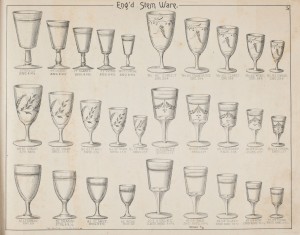No wine before its time?
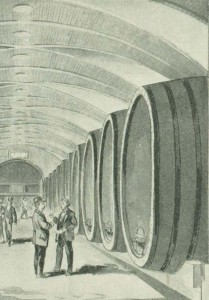 At a meeting of the American Philosophical Society inPhiladelphia, members discussed the business of wine when considering improvements to benefit the country’s “Interest and Prosperity”:
At a meeting of the American Philosophical Society inPhiladelphia, members discussed the business of wine when considering improvements to benefit the country’s “Interest and Prosperity”:
Our Wines . . . are imported from foreign Countries; [even though our grapes and grapevines] grow in every Soil, are suited to every Climate, and, without Cultivation, pour forth [rich and luscious] Fruits in Abundance . . . [With] a little Care and Industry, America might produce Wine sufficient, not only for Home Consumption, but even for Exportation; and . . . in Time, our Wine may be much esteemed.
Pennsylvania Gazette, March 17, 1768
Marketing Wines
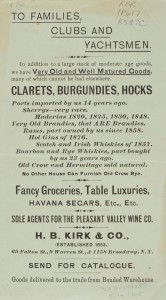 Advertisement for H. B. Kirk & Co.
Advertisement for H. B. Kirk & Co.
New York, New York; 1870s
Printed Book and Periodical Collection, Winterthur Library TP617 K59 TC
Advertisements like this one indicate that at least some wine and spirit dealers attempted to appeal to a broad market. In addition to expensive “Very Old and Well-Matured Goods,” H. B. Kirk & Co. provided less-costly “moderate age goods.” The phrase “Very Old Brandies that ARE Brandies” almost certainly differentiates the firm’s “honest” stock from that of dealers who followed the unethical practice of including additives to make lesser wines taste more like elegant ones.
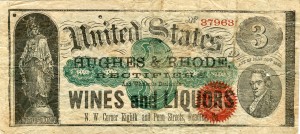 Discount coupon for alcoholic beverage merchants (with detail of reverse)
Discount coupon for alcoholic beverage merchants (with detail of reverse)
Novelty Ad Company
Peoria, Illinois; after 1869
Joseph Downs Collection of Manuscripts and Printed Ephemera, Winterthur Library 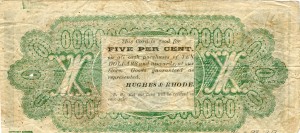 Col. 9 76×98.218
Col. 9 76×98.218
This rare coupon offers a 5 percent discount on purchases from Hughes & Rhode, a Reading, Pennsylvania, wine and liquor merchant. Like modern coupons, it specifies that the discount only applies to purchases over a minimum amount ($10), and that only one coupon can be used per purchase.
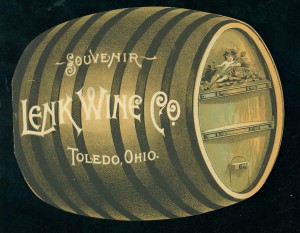 Trade card for Lenk Wine Company (with details)
Trade card for Lenk Wine Company (with details)
Toledo, Ohio; about 1900
Joseph Downs Collection of Manuscripts and Printed Ephemera, Winterthur Library Col. 46 02×030.59
Advertising pamphlets like this one would have interested wine merchants, private wine consumers, and tourists who might enjoy visiting the vintner. The folding  “souvenir” opens to nine pages of images and text about Lenk Wine Company. Active in West Toledo from 1872 until around 1915, the factory boasted 28 acres “splendidly adapted to the cultivation of wine” and also purchased “large quantities of grapes from
“souvenir” opens to nine pages of images and text about Lenk Wine Company. Active in West Toledo from 1872 until around 1915, the factory boasted 28 acres “splendidly adapted to the cultivation of wine” and also purchased “large quantities of grapes from 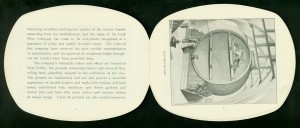 the Lake Erie Islands.” The grounds featured flower gardens, walks, and summer houses. The casks in the cellars ranged from 1,000 to 36,000 gallon capacity!
the Lake Erie Islands.” The grounds featured flower gardens, walks, and summer houses. The casks in the cellars ranged from 1,000 to 36,000 gallon capacity!
Marketing Wine Equipage
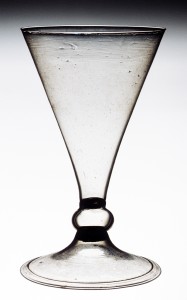 Beer or wineglass
Beer or wineglass
Venice (Murano) or northern Europe; 1660–80
Glass (nonlead or low lead)
Museum purchase with funds provided by the Claneil Foundation 1975.205
Between 1667 and 1672 John Greene sent numerous glass orders to Venetian Allesio Morelli. Drawings for more than 400 glass designs to be made for the English market accompanied the correspondence and were identified by type: wine, beer, French claret, Spanish sack (sherry), brandy, and posset, among others. At least one glass design in the Greene order was for the type shown here. As a member of the London Glass Sellers Company, Greene may have been responsible for Venetian glassware that made its way to colonial American markets.
Venetian and Venetian-style (façon de venise) wineglasses have been excavated from 17th-century sites in Virginia, Maryland, and New York. The earliest American reference to such glass may be from 1633, when a Dutch visitor to Jamestown, Virginia, was offered “a Venice glass of sack” by the governor. In England, Samuel Pepys’s diary records in September 1665, a windy day which adversely affected fine glassware at the Essex, England, seat of one Sir W. Hickes who had
Not so much as a latch to his dining-room door [so] the wind blowing into the room for want thereof, flung down a great Bowpott that stood upon the side-table, and that fell upon some Venice-glasses and did him a crown’s worth of hurt.
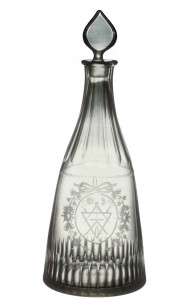
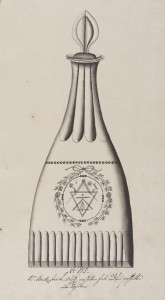 Glass pattern book, nos. 185, 87–90 and 165–169
Glass pattern book, nos. 185, 87–90 and 165–169
Parchen, Bohemia (Czech Republic); 1790–1825
Gift of the Friends of Winterthur, Joseph Downs Collection of Manuscripts and Printed Ephemera, Winterthur Library 71×206.1
Decanter, rummer, and mug
Bohemia (Czech Republic); 1790–1825
Glass (nonlead)
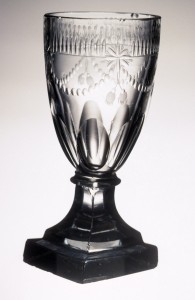
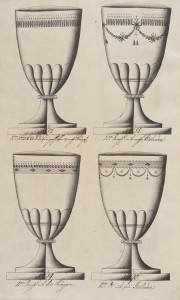 Bequest of Mrs. Waldron Phoenix Belknap 1960.296.2; Museum purchase 1957.18.35, 1974.69
Bequest of Mrs. Waldron Phoenix Belknap 1960.296.2; Museum purchase 1957.18.35, 1974.69
Known as the Gardiner’s Island Glass Catalogue, the important pattern book shown here has a New York state history of ownership and bears the name of Johannes Schiefner, who operated an export and commission agency in 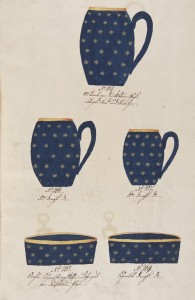 Parchen, Bohemia. It is thought that the
Parchen, Bohemia. It is thought that the 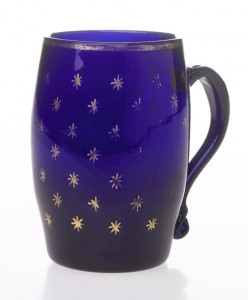 catalogue was given to American merchant John Lyon Gardiner, and a number of images in the document match glassware of the types used in America around 1800.
catalogue was given to American merchant John Lyon Gardiner, and a number of images in the document match glassware of the types used in America around 1800.
Illustration 185 shows a decanter similar to the glass one seen here, with a title that translates as “Decanter, thick, scalloped and grooved neck, and delicately engraved with [freemason] symbols.” Other Masonic wares appear on the previous catalogue page. Engraved rummers and gilt blue-glass mugs are among the other drinking vessels included in the pattern book.
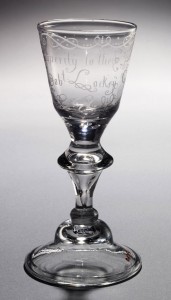 Wineglass
Wineglass
Possibly Norway; 1760–70
Glass (lead)
Wheel-engraved inscription “Prosperity to the St Agnetta / Robt Lockey Commder.”
Gift of Richard and Pamela Mones 2004.63.1
This wineglass, one of a pair, resembles a type illustrated in a 1763 Norwegian design book known as the Ip Olufsen Weyse Price List. Number 421 in the book is titled “Perlkekelchen Spits Vand,” in reference to the “pearls,” or air bubbles, in the base of the bowl. Lockey, the name on the glass, is a common English and Scottish surname and is known in 17th- and 18th-century Virginia. The St. Agnetta presumably was his ship.
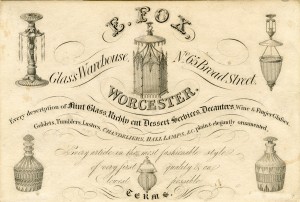 Trade card for E. Fox Glass Warehouse
Trade card for E. Fox Glass Warehouse
Probably England; 1810–30
Joseph Downs Collection of Manuscripts and Printed Ephemera, Winterthur Library 75×188
Trade sign dish for C. Levering
Samuel Alcock and Company
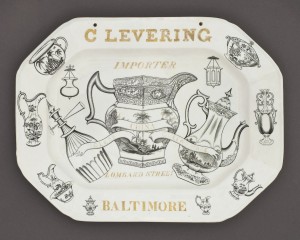 Burslem, Staffordshire, England; 1830–59
Burslem, Staffordshire, England; 1830–59
Earthenware (whiteware)
Museum purchase 1956.15
This trade card for an English shop illustrates some of the high-end glassware available to consumers from 1810 to 1830. In addition to lighting and dessert services, we are told that E. Fox carried “Richly cut . . . Decanters, Wine and Finger Gla[s]ses, Goblets [and] Tumblers” at reasonable rates.
Among Winterthur’s English dishes bearing references to American merchants is the one shown here with the maker’s mark of Samuel Alcock & Co. of Burslem, Staffordshire. The front is inscribed for C. Levering of Baltimore. The printed motifs symbolize the fact that Levering carried ceramics and glass—including wine-related vessels—at his store.
Hobbs Glass Company catalogue, pls. 5 and 22 (detail)
Wheeling, West Virginia; about 1888
Printed Book and Periodical Collection, Winterthur Library NK5199 H68 TC*
Founded in 1863 as Hobbs, Brockunier & Company, the Wheeling, West Virginia, firm that published this glassware 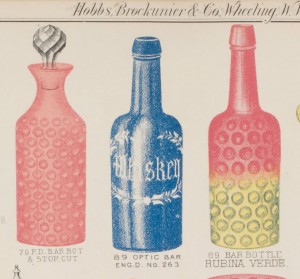 trade catalogue reorganized as Hobbs Glass Company in 1888. The title page tells us that the catalogue is “now arranged so that additional sheets can be inserted by means of eyelets and lace string,” allowing for updates when new products became available. In addition to items in undecorated, colorless glass, one might order cut or engraved “crystal” or brilliantly hued vessel and dish forms. The factory closed in 1893 and in 1903 became the H. Northwood & Company Glass Works.
trade catalogue reorganized as Hobbs Glass Company in 1888. The title page tells us that the catalogue is “now arranged so that additional sheets can be inserted by means of eyelets and lace string,” allowing for updates when new products became available. In addition to items in undecorated, colorless glass, one might order cut or engraved “crystal” or brilliantly hued vessel and dish forms. The factory closed in 1893 and in 1903 became the H. Northwood & Company Glass Works.
Related Themes:

